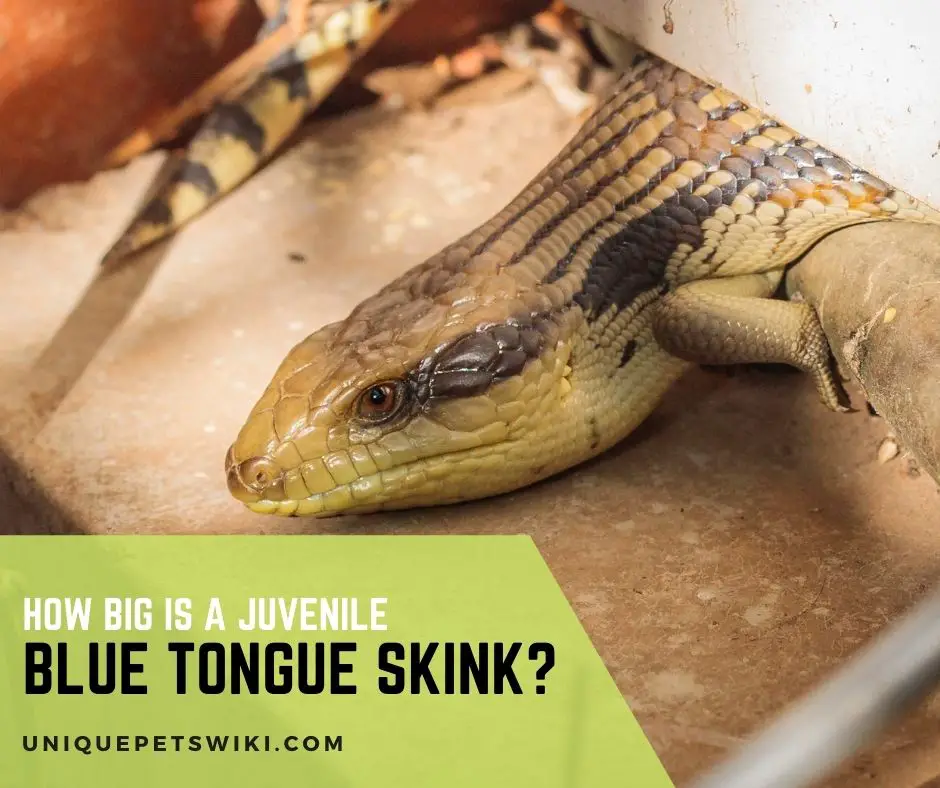This brief guide about the size, diet, and identification of juvenile blue-tongue skinks is written for people who have little or no experience in keeping lizards as pets.
There are several species of blue-tongue skinks available, and their sizes can vary considerably. So, it is important that you research your particular sub-species of blue tongue skink thoroughly. If needed, talk to an exotic vet or a knowledgeable breeder from whom you purchase your blue tongue.
If you have come across a blue tongue in your yard, please contact your local reptile control center or an expert herpetologist. It is important to prepare in advance before buying or adopting a blue tongue. After all; the settling down period of the baby or juvenile skink can determine its long-term welfare.
This article has been reviewed by Dr. Dilber. Read more about our knowledge control process here.
Contents
How Big Is A Juvenile Blue Tongue Skink?
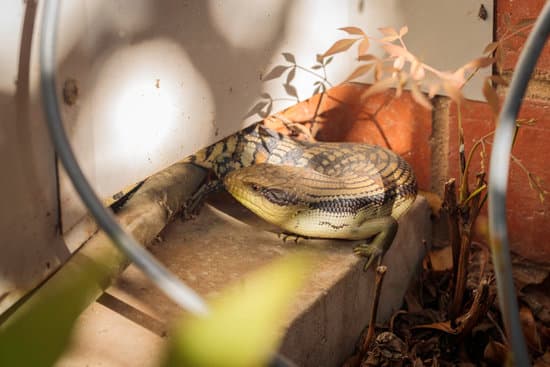
New-born blue tongues measure about 150mm (15 cm) or 5.9 inches in length. When fully grown, they measure about 500mm (50 cm) or up to 19 inches.
By the time a blue-tongue skin is 5-7 months old, it may measure between 11-13 inches or about 280mm. Blue-tongue skins are capable of rapid growth and usually reach their adult size by the age of 1 ½ to 2 years.
As mentioned before, different species and sub-species of blue tongues can grow to different sizes in adulthood. According to PetMD, here is a table showing the sizes of different varieties of blue tongue skinks:
| Type | Size of adult |
| Western blue-tongued skinks | 19.5 inches or 50 cm |
| Pygmy blue-tongued skinks | 4 inches or 10 cm |
| Blotched blue-tongued skinks | 23.5 inches or 60 cm |
| Tanimbar Island skinks | 15-17 inches or 38-43 cm |
| Kei Island and Indonesian blue-tongued skinks | 19.75 inches or 50 cm |
| Eastern blue-tongued skinks | 19 inches or 48 cm |
| Northern blue-tongued skinks | 24 inches or 61 cm |
| Centralian blue-tongued skinks | 15.5 and 17.5 inches or 40 to 45 cm |
| Merauke blue-tongued skinks | 25 to 30 inches or 63.5 to 76 cm |
How Old Is A Juvenile Blue Tongue?
A blue-tongue skink is considered a juvenile from the age of 3 to 8 months.
Most juveniles measure between 12-20 inches but the exact size will depend on genetics, the sub-species, the gender of the skink, as well as the care and husbandry it has received in its babyhood.
How Much Does A Juvenile Blue Tongue Skink Cost?
Juvenile blue tongue skinks can cost anywhere between $150-$500 depending on where you buy your pet from, its color, and its morph.
Rare colors like albino blue tongue skinks can even cost up to $5000.
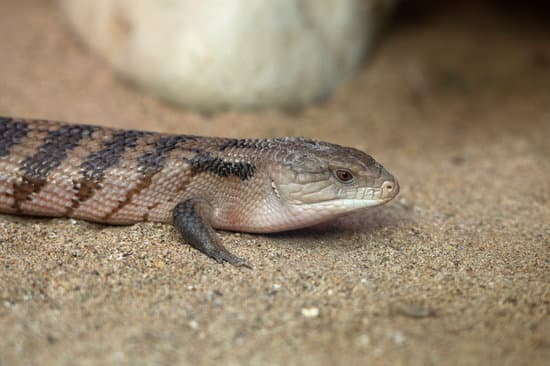
Where To Buy A Juvenile Blue Tongue Skink?
Always buy your blue-tongue skink from a private breeder or a reputed online pet store that has the necessary license for commercial breeding. If the breeder or seller is unable to produce the appropriate wildlife license, then please avoid them. This is because you will not be able to know if the lizard is legally theirs.
Please note that many pet shops and private keepers will also ask for your details when you acquire your blue tongue from them.
You can also attend reptile expos and conventions in or near your city to acquire your blue tongue skink.
What Do You Feed A Juvenile Blue Tongue Skink?
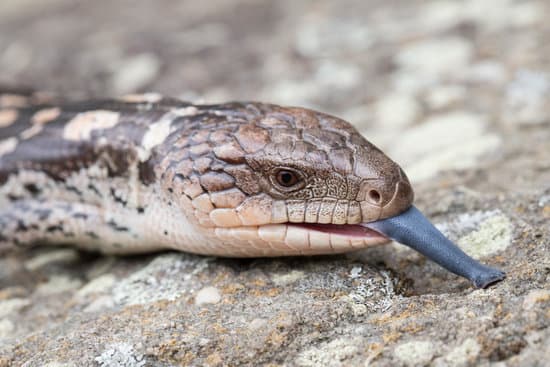
When it comes to feeding juvenile blue tongue skinks, you have several options before you.
Since these lizards are omnivores and need a lot of protein in their developing period, you must provide them with plenty of animal protein. Without protein, their scales could dry up and they could develop health issues including physical deformities.
Here are some vet-recommended feeding options for juvenile blue tongue skinks:
- Crickets, snails, mealworms, and waxworms are all good choices for feeding your juvie skink.
- Pinky mice are also a good option but please limit feeding since they are high in fat.
- Commercial reptile food like Zoo Med Blue Tongue Skink and Tegu food is also a great choice. Follow the feeding instructions on the label.
- Chopped fruits and vegetables like dark leafy greens, carrots, apples, bananas, pears, dandelions, milk thistle, pawpaw, alfalfa, green beans, watercress, etc. are all excellent food choices for juvie blue tongue skinks.
- Add a calcium supplement to your pet’s diet once a week.
- You may also feed moistened dog kibble or wet dog food occasionally to your pet.
Zoo Med 3 Cans of Zoo Menu Blue Tongue Skin and Tegu Food
- Zoo Menu
- Tegu and Monitor food
- 6 oz
- Zoo Med
- Pack of 3
Last update on 2022-12-29 / Affiliate links / Images from Amazon Product Advertising API
Should You Buy A Juvenile Blue Tongue Skink for Pet? Pros and Cons Keeping Juvie Skinks as Pets
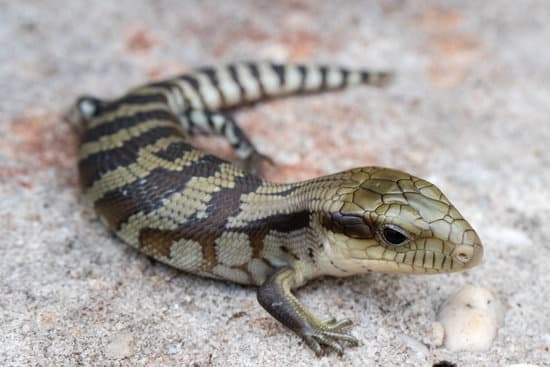
There are two lines of thought here.
Some experts believe that it is better to buy a juvenile blue tongue skink compared to a baby or an adult. This is due to the following reasons:
- Baby skinks get to learn many things from their parents and siblings and should not be separated from them early on.
- Juvenile skinks make better pets than adult skinks since they do not have rigid dietary preferences. They are more flexible or adaptable and also open to being handled and tamed.
- Juvies also need a lot less space compared to adult skinks which grow to almost 500 mm or about 20 inches. Adult skinks may even have poor breeding history and could develop health issues. They definitely need a lot more space compared to juvenile skinks.
- The downside of keeping juvenile skinks as pets is that they need a lot more feeding compared to adult skinks. They also grow rapidly. Many beginners to skink husbandry tend to find juvenile skinks difficult to tame.
Others believe that baby skinks make better pets due to the following reasons:
- Wild-bred mother skinks rarely care for their babies and abandon them soon after birth. Even captive-born and bred skink babies are usually separated by breeders after they are about 2 months of age. This is because, after this age, baby skinks start getting territorial and tend to fight with their siblings and parents for food, resources, etc.
- There are some risks of keeping baby skinks with their moms as mommy skinks could accidentally kill their babies. You can read more about such incidents here.
- This is why, breeders are willing to sell 2-month baby skinks. Usually, they do not sell baby skinks that are less than 2 months of age.
REPTIZOO Large Glass Reptile Terrarium 48″ x 24″ x 24″, Tall & Wide Reptile Habitat Tank 120 Gallon with Sliding Door Screen Ventilation
- 【PATENT DESIGN REPTILE TERRARIUM】Made of high quality tempered glass, this 120 gallon terrarium is more sturdy and safe. The side panels have been updated to all glass and there is no mesh now. It is a pleasure to watch and enjoy the activity of animals from the all glass terrarium of 360° full view.(Please do not drill holes on tempered glass, the glass may be crack)
- 【LARGE HABITAT TANK FOR REPTILE AMPHIBIAN】Size of this large terrarium is 48”(W) x 24”(D) x 24”(H), suitable for reptile and amphibian such as bearded dragon, adult pogona viticeps, young adult sulcata tortoise, juvenile aldabrachelys gigantea, red leg tortoise, leopard tortoise, radiated tortoise, adult python regius, boa constrictor and adult hedgehog and the large tank(120 gallon) provides vast room for reptiles pets to move around.
- 【EASY MAINTENANCE & MORE UVB PENETRATION】Front sliding opening door allows easy access for maintenance and feeding your pets and larger-woven screen top ventilation for more UVB and infrared penetration, the top screen is completely removable for easy access while decorating or cleaning, which also allows you to create realistic animal habitats for your reptile pets easily.
- 【WATERPROOF RAISED BOTTOM】Raised bottom plate provides adequate ventilation and enough spaces for accessories such as UTH(under tank heater). And waterproof bottom provides a comfortable living environment for amphibians.
- 【ANTI-ESCAPE】Security buckle on the lid ensure the tank closed tightly, prevent your reptile amphibian chameleon pets from escaping. And the security lock avoid the doors open accidently by your kids and keep your kids safe.
Last update on 2022-12-30 / Affiliate links / Images from Amazon Product Advertising API
FAQs
Are blue tongue skinks good for beginners?
Yes, blue-tongue skinks make good beginner pets. They do not need much care and once you have a sound setup, these docile lizards do not need much looking after.
Do blue tongue skinks like to be handled?
Captive-bred blue tongue skinks are open to being handled. They are fairly docile and have steady temperaments.
How long until blue tongue skinks are fully grown?
Blue-tongue skinks grow rapidly. Most reach their adult size by the time they are 1-2 years old. This period can vary based on the skink’s genetics, environment, husbandry, and even the sub-species of the skink.
Conclusion – Juvenile Blue Tongue Skink
If you are planning to keep a juvenile blue tongue skink as a pet, please research your sub-species properly. Most juveniles measure 15 cm or 5.9 inches in length. When fully grown, they will measure about 50 cm or up to 19 inches. Thus, they need a lot of space and you must choose their enclosure properly.
Well-bred captive juvenile blue tongue skinks are docile and make excellent pets. They are easy to take care of but they need frequent feedings.
We hope this brief guide helps you take good care of your skink.
